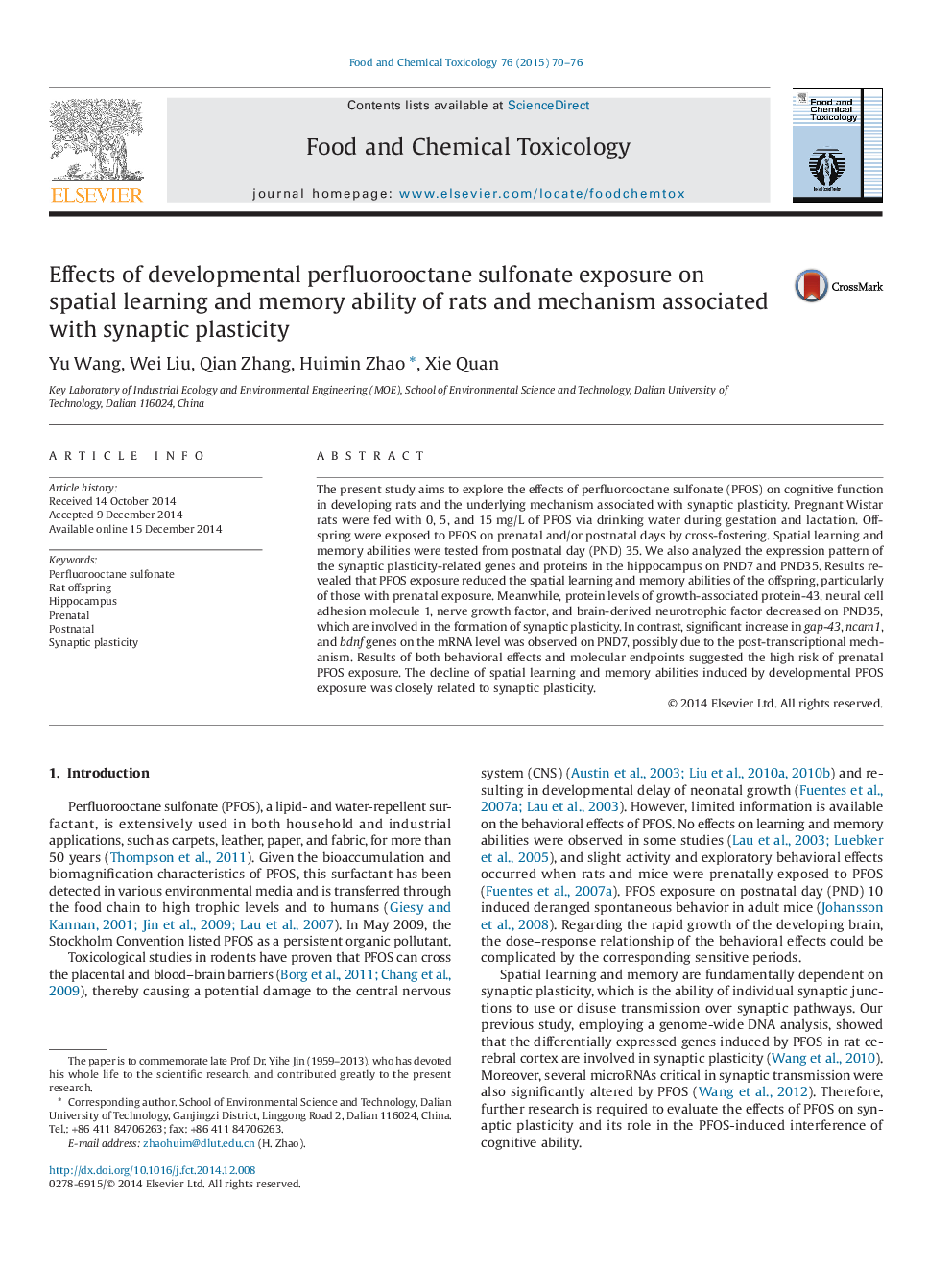| کد مقاله | کد نشریه | سال انتشار | مقاله انگلیسی | نسخه تمام متن |
|---|---|---|---|---|
| 5850213 | 1561768 | 2015 | 7 صفحه PDF | دانلود رایگان |
- PFOS exposure induced injury on the spatial learning and memory abilities of rat offspring, especially the prenatal exposure.
- GAP-43, NCAM1, NGF and BDNF proteins in hippocampus decreased on PND35.
- The increase of Gap-43, ncam1, and bdnf at mRNA levels suggest a post-transcriptional or transcriptional effect.
- PFOS exposure might inhibit the growth of synapses, destroying the synaptic plasticity, and influencing behavioral response.
The present study aims to explore the effects of perfluorooctane sulfonate (PFOS) on cognitive function in developing rats and the underlying mechanism associated with synaptic plasticity. Pregnant Wistar rats were fed with 0, 5, and 15âmg/L of PFOS via drinking water during gestation and lactation. Offspring were exposed to PFOS on prenatal and/or postnatal days by cross-fostering. Spatial learning and memory abilities were tested from postnatal day (PND) 35. We also analyzed the expression pattern of the synaptic plasticity-related genes and proteins in the hippocampus on PND7 and PND35. Results revealed that PFOS exposure reduced the spatial learning and memory abilities of the offspring, particularly of those with prenatal exposure. Meanwhile, protein levels of growth-associated protein-43, neural cell adhesion molecule 1, nerve growth factor, and brain-derived neurotrophic factor decreased on PND35, which are involved in the formation of synaptic plasticity. In contrast, significant increase in gap-43, ncam1, and bdnf genes on the mRNA level was observed on PND7, possibly due to the post-transcriptional mechanism. Results of both behavioral effects and molecular endpoints suggested the high risk of prenatal PFOS exposure. The decline of spatial learning and memory abilities induced by developmental PFOS exposure was closely related to synaptic plasticity.
Graphical Abstract61
Journal: Food and Chemical Toxicology - Volume 76, February 2015, Pages 70-76
